Overlooking the Manhattan skyline, the One World Observatory embodies the rebirth and resilience of New York after the tragic events of 11 September 2001. This exceptional attraction, located at the top of One World Trade Center (One WTC), offers much more than just a panoramic view, it tells the story of a city that is constantly reinventing itself. Open to the public since 2015, the observatory has quickly established itself as a must-see for any traveller to New York.
At 417 metres high (541 metres including its antenna), One World Trade Center reigns as the tallest tower inNorth America. Its total height of 1776 feet is no coincidence, this symbolic figure refers to the year of the United States Declaration of Independence, making the building part of the country’s history. The surrounding district, completely rebuilt, is now home to the 9/11 Memorial and Museum, creating a coherent whole that honours the past while celebrating the future.
Ascending to the heavens: an immersive experience
The visit to One World Observatory begins long before you reach the upper floors. From the moment you arrive at 285 Fulton Street, in Manhattan’s Financial District, you are immersed in a carefully orchestrated experience that prepares your mind for the final revelation.
Going through security
As with most of New York’s iconic sites, security checks are unavoidable. The measures are strict but effective, ensuring the safety of all visitors without compromising the smooth flow of the tour. If you’ve booked your ticket online (which is highly recommended), you’ll be able to access the security checkpoint directly, without having to wait in the ticket-purchase queue.
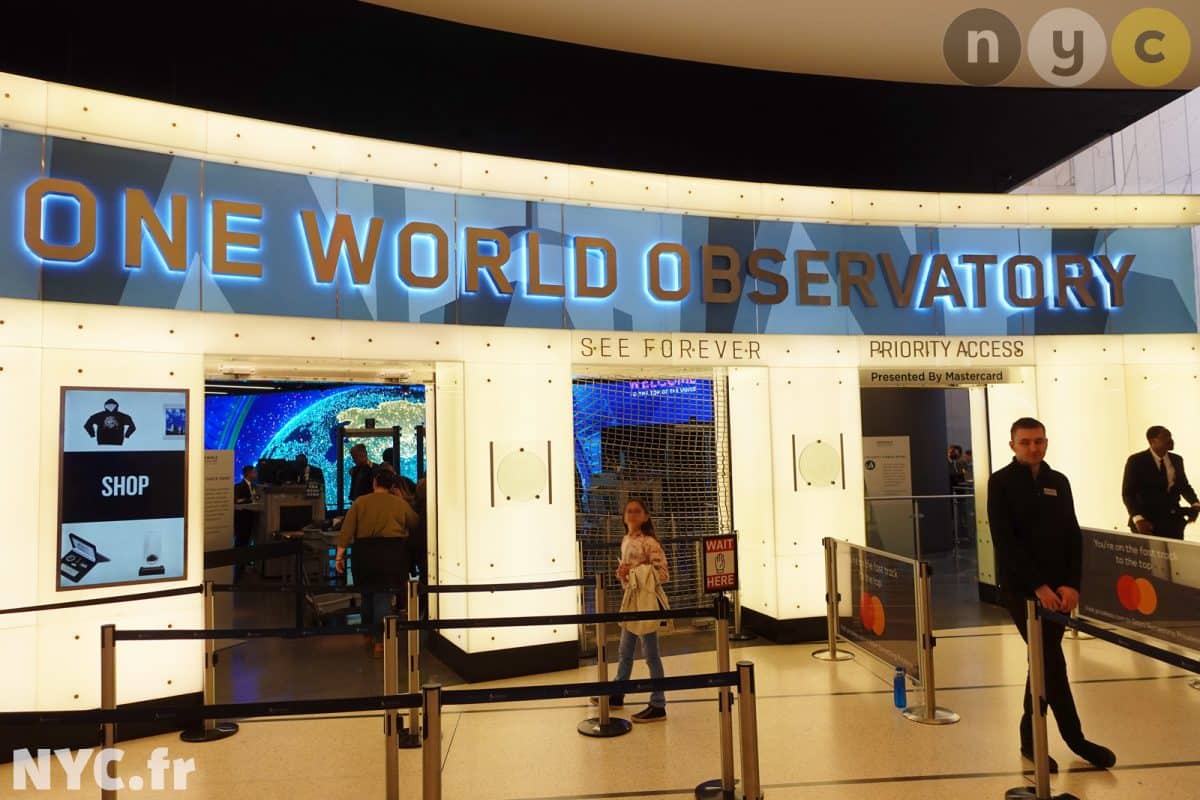
The Global Welcome Centre
After the security check, you enter the Global Welcome Center, a multimedia area that serves as an introduction to your visit. Here, a giant screen displays fascinating statistics about One World Trade Center, its height, the number of floors, the amount of materials used in its construction, and the number of man-hours it took to build it.
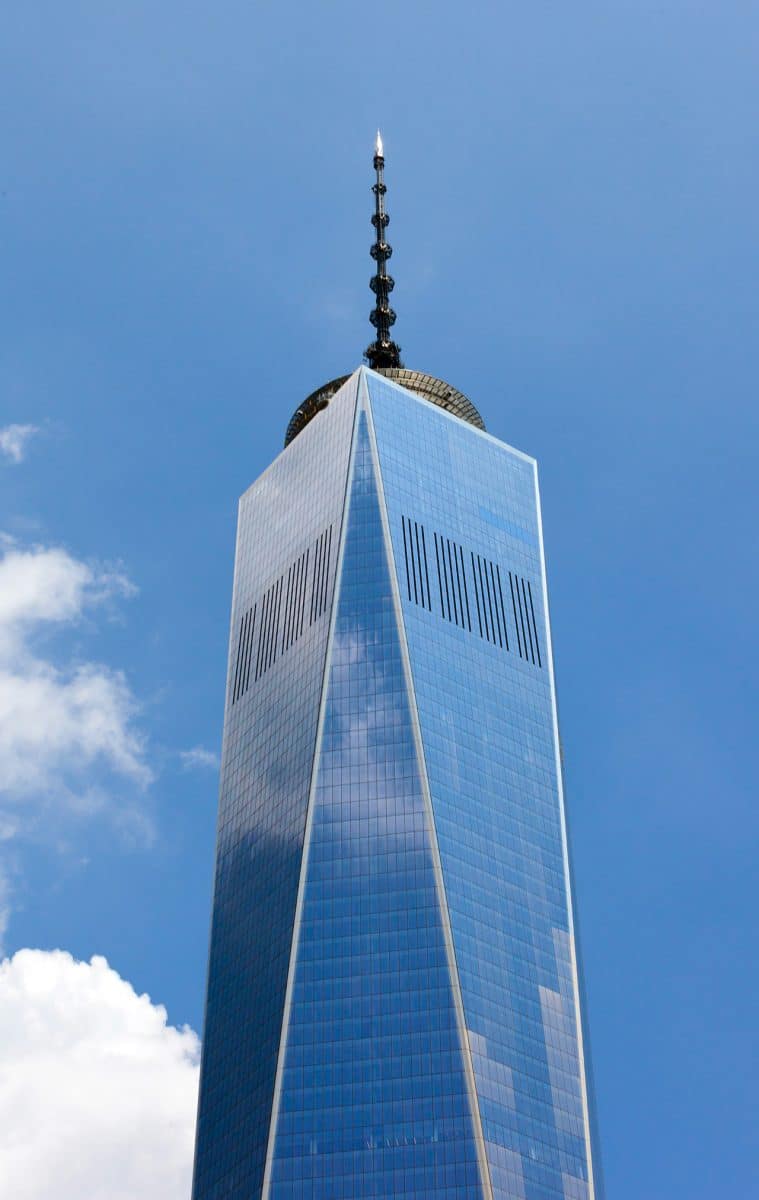
This first stage is enhanced by an immersive video featuring the testimonies of the workers, architects and engineers who took part in the construction of this emblematic tower. Their personal accounts add a human dimension to this titanic project, giving you a better understanding of the technical and emotional challenges faced during its construction.
The tour continues in a gallery that traces the history of the building through a variety of anecdotes and information. Here you will learn how One WTC was designed to become not only an architectural symbol but also a model of energy efficiency and sustainability.
The Sky Pod climb
One of the most memorable moments of your visit will undoubtedly be the ascent in the Sky Pod, the name given to the ultra-fast lifts at One World Observatory. In just 47 seconds (timed!), you’ll be propelled from the ground floor to the 102nd floor, an ascent of over 400 metres at an impressive speed.
But what makes this experience truly unique is the animation projected onto the walls of the lift as you ascend. The walls are transformed into 360° video screens that retrace theurban evolution of Manhattan from the 1500s to the present day. You can watch the metamorphosis of the island, first occupied by Amerindians, then gradually urbanised to become the vertical metropolis we know today.
This animation, perfectly synchronised with the ascent, creates a complete sensory experience that prepares your mind for what awaits you at the summit. The 47 seconds pass in a flash, and suddenly the doors open onto a whole new dimension.
The observatory: an incomparable view on three levels
The One World Observatory is spread over three separate floors : the 100th, 101st and 102nd floors of the tower, each offering a different but complementary experience. In all, allow around 30 minutes from the time you enter the building until you reach the observation floors, the time you need to absorb all the preliminary information that will enrich your experience.
The 102nd floor: first contact with the view
It’s on the 102nd floor that the lift doors open, giving you your first glimpse of the spectacular view that awaits you. The emotion is often palpable among visitors discovering this 360 degree panorama of New York and its surroundings for the first time.
From this dizzying height, the city unfolds before your eyes like a giant scale model. The skyscrapers that looked imposing from the street now appear tiny. You can clearly make out the main arteries that structure Manhattan, the silvery ribbon of the Hudson River to the west and the East River to the east, as well as the different districts that make up New York’s urban mosaic.
On a clear day, visibility can reach almost 80 kilometres, allowing you to see the neighbouring states of New Jersey, Connecticut, Pennsylvania, Massachusetts and even New York State to the north.
The 101st floor: the gastronomic experience
Descending one level takes you to the 101st floor, which is mainly dedicated to restaurants. There are several options for taking a gourmet break while continuing to enjoy the breathtaking view.
The restaurant areas offer a selection of dishes and drinks to extend your experience in an exceptional setting. Imagine sipping a cocktail or enjoying a light meal against the backdrop of the Manhattan skyline stretching as far as the eye can see, an experience worth having despite the relatively high prices.
If this option appeals to you, bear in mind that advance booking is strongly advised, especially at peak times or during the high tourist season. Demand is high, and you don’t want to miss this opportunity for lack of space.
The 100th floor: the heart of the observatory
The 100th floor is the main area of the observatory, where you can take your time admiring the panoramic view from different angles. Floor-to-ceiling windows offer total immersion in the cityscape stretching out at your feet.
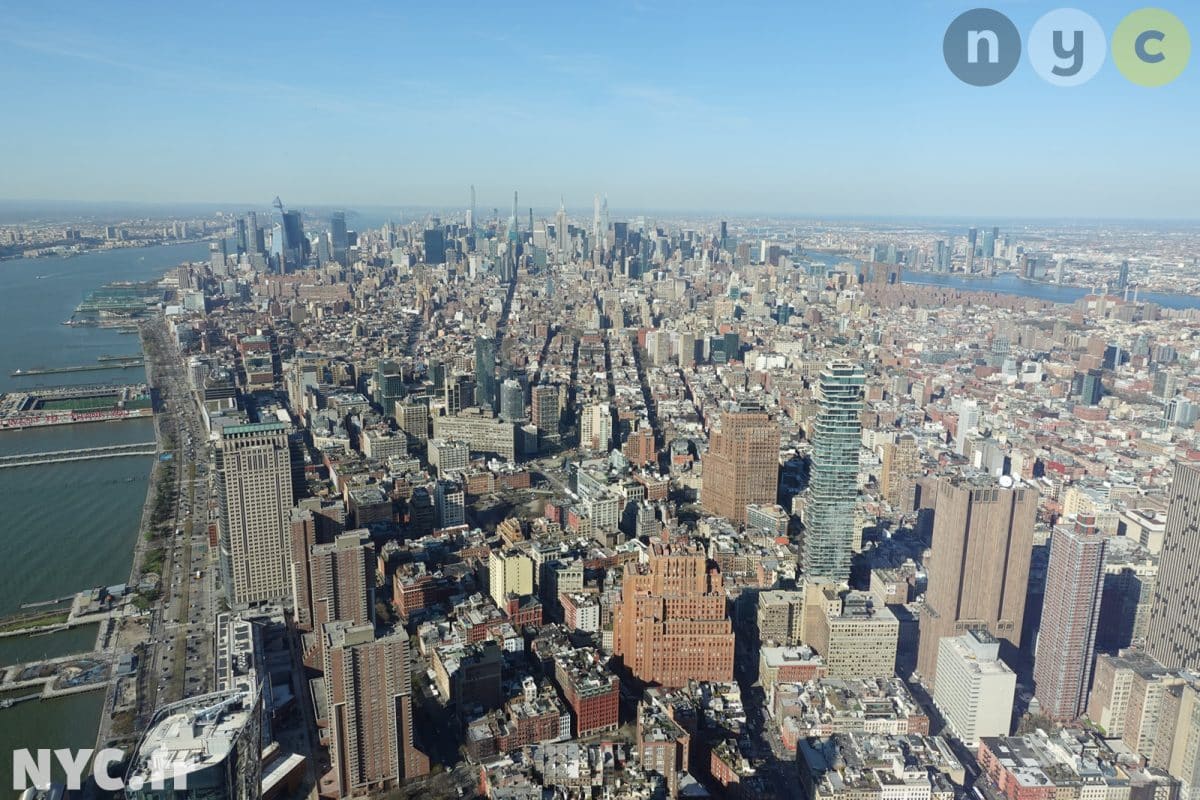
One of the highlights of this floor is undoubtedly the Sky Portal, a circular glass platform 4.3 metres in diameter built into the floor. Standing on it, you’ll feel as if you’re floating above the streets of Manhattan, with a real-time view of what’s happening 400 metres below. It’s an experience that often sends a shiver down the spine of even those who don’t normally shy away from heights.
To immortalise these exceptional moments, here’s an invaluable photography tip: get your camera as close as possible to the glass, ideally by placing it directly against the glass, to avoid unwanted reflections. This simple trick will allow you to capture sharp, bright images of the skyline, without the stray reflections that often spoil photos taken behind glass.
Take your time to walk all around this floor, stopping in front of each cardinal direction to identify New York’ s iconic landmarks: the Empire State Building and Chrysler Building to the north, the Brooklyn Bridge and Brooklyn borough to the east, the Statue of Liberty and the harbour to the south, and theHudson River with New Jersey to the west.
Practical information for preparing your visit
To make the most of your visit to One World Observatory, you need to prepare carefully. Here is all the practical information you will need to organise your trip in the best possible conditions.
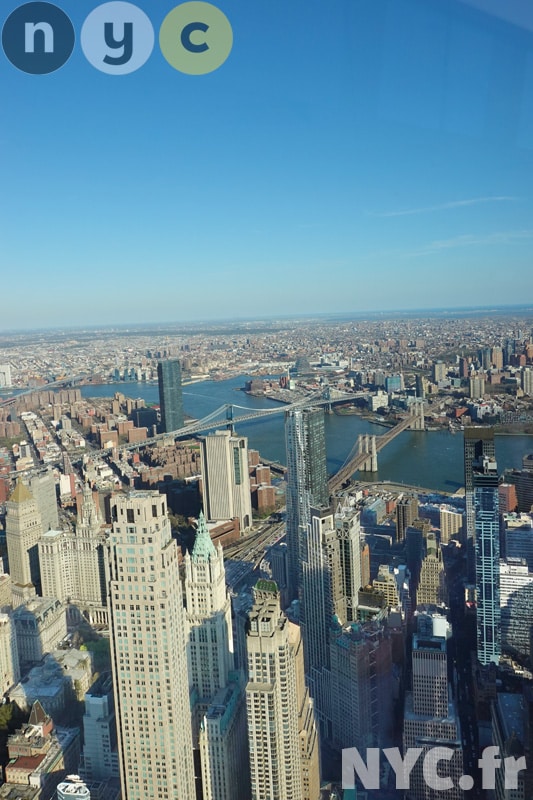
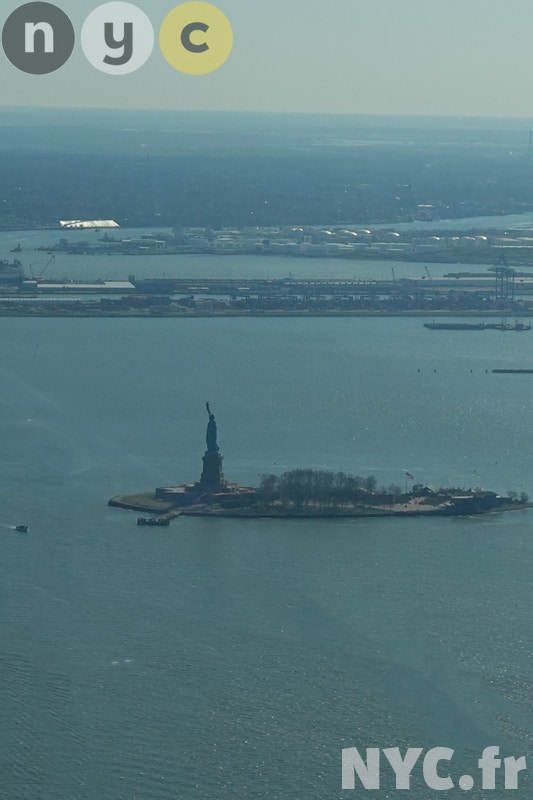
Ticket prices and options
Here are the detailed prices by category:
- Adult: €45
- Children (0-5 years): Free
- Young person (6-12 years): €40
- Retired (over 65): €44
Please note that minors must be accompanied by an adult, and that you must be at least 17 years old to buy a ticket.
Save on admission to the One World Observatory
The One World Observatory is included in several tourist passes that can save you time and money. Four passes provide access to this must-see attraction: the Go City Pass, the New York Pass, the Sightseeing Flex Pass and the Sightseeing Day Pass. By opting for one of these passes, you can not only discover the one, but also visit other emblematic places in the city, without paying for each entrance separately. It’s a practical and economical solution, especially if you plan to explore several attractions during your stay.
For an enhanced experience, you can opt for the Priority Combo at $64, which includes a virtual guide on iPad. This interactive tool allows you to easily identify the points of interest visible from the observatory. The on-screen view moves with you as you move from one window to the next, showing you the names of the iconic sites in front of you. If this option seems too expensive, you can hire an iPad on site for just $15.
An economical alternative is to opt for the New York Explorer Pass, with prices starting at €74 for adults (including 3 activities) and €65 for children aged 3 to 12. This pass gives you access to several of New York’s major attractions, including the One World Observatory, and often offers substantial savings compared with buying individual tickets.
Here’s a tip that’s worth its weight in gold: make sure you book your tickets in advance! The observatory operates on a quota system, limiting the number of visitors admitted every 15 minutes. As this is one of the most popular attractions in New York, slots often sell out several days in advance, particularly during the peak tourist season.
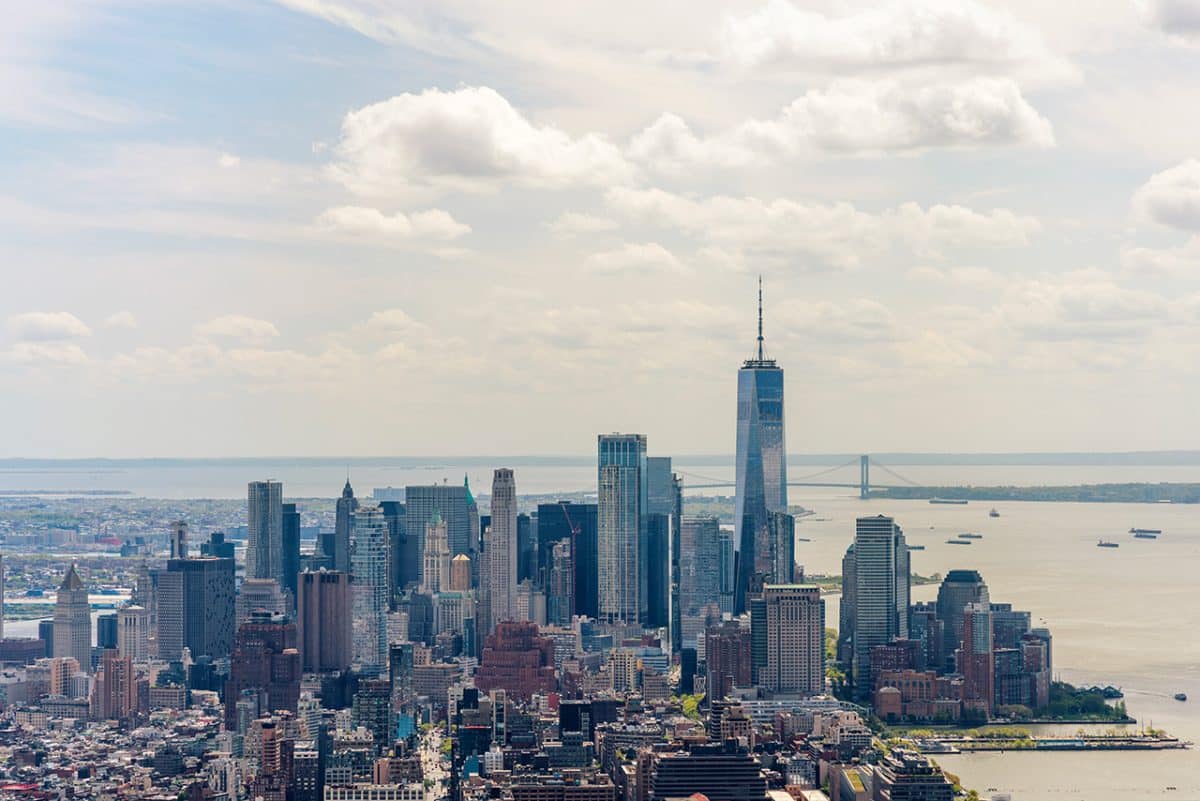
Access and logistics
The main entrance to One World Observatory is at 285 Fulton Street, in Manhattan’s Financial District, right next to the 9/11 Memorial.
There are several options for getting there by metro:
- Lines N, R, W: get off at Cortlandt Street station
- Lines 4, 5: get off at Fulton Street station
For your personal belongings, please note that there are no lockers or left-luggage facilities directly on site. Fortunately, backpacks and cameras are allowed inside, as are pushchairs (although they must be folded to go up in the lift).
If you’re travelling with more bulky luggage or items you’d rather not wear during your visit, Bounce Luggage Storage offers secure lockers nearby, at a cost of $5.90 per item. You can book online via their website, which will geolocate you to suggest the nearest locations.
Opening times and best times to visit
One World Observatory is generally open every day, with opening times varying according to the time of year. The last departures are always 45 minutes before the official closing time, to allow all visitors to enjoy the experience to the full.
Allow around an hour for your visit from the time you pass through security. This time includes the multimedia introduction, the lift ride up and the discovery of the observatory’s three floors. Of course, you can stay longer if you want to take time to admire the view in different lights or enjoy the refreshment areas.
To get the most out of the experience and make the most of your photographs, two times of day are particularly recommended:
- At midday, when the sun is at its zenith, you’ll benefit from optimum light to photograph the city in all directions, without being hampered by the backlighting that can affect your images at the start or end of the day.
- At sunset, you’ll witness a truly magical spectacle as the last rays of the sun set the horizon ablaze and the lights of the city gradually begin to come on. The view of the illuminated Empire State Building and the Brooklyn Bridges is simply extraordinary. This transitional period between day and night offers exceptional photographic opportunities, with striking contrasts between the coloured sky and the silhouettes of the skyscrapers.
Bear in mind, however, that these times, particularly sunset, are the most popular with visitors. The crowds are generally greater at these times, making it all the more crucial to book your slot in advance.
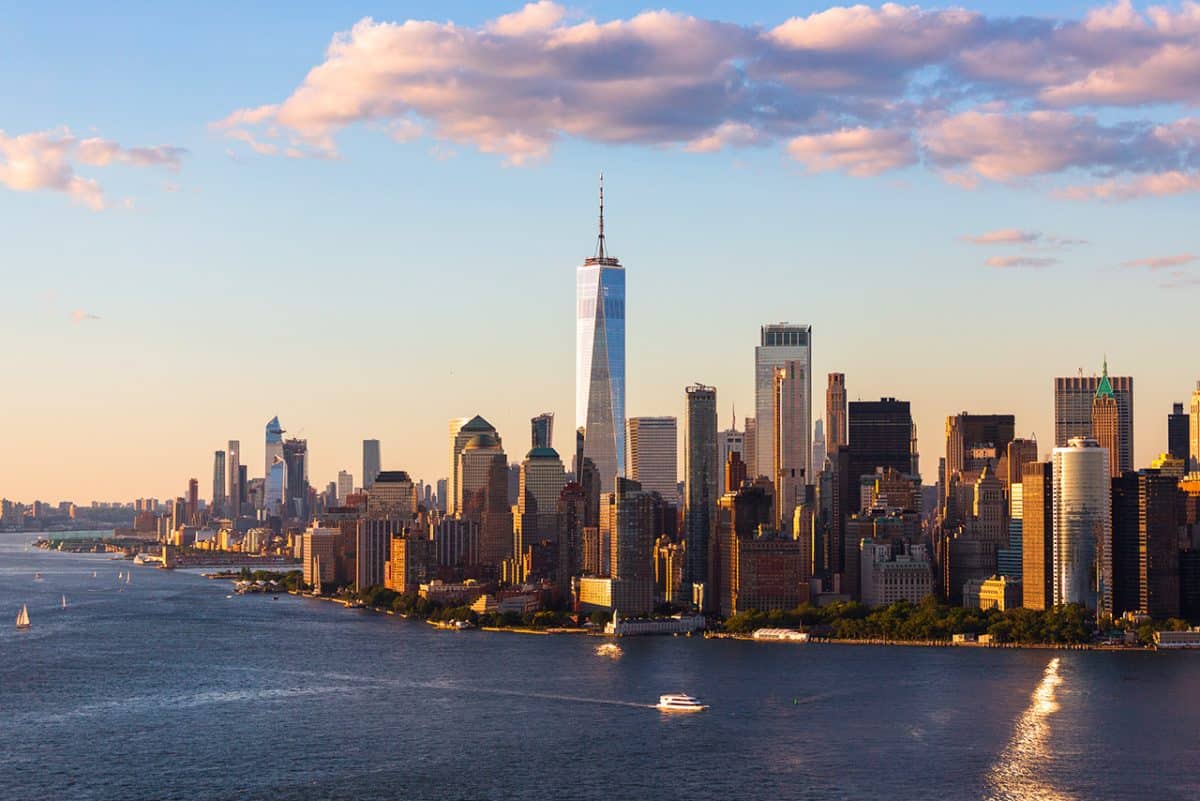
The experience beyond the view: a symbol of rebirth
Visiting the One World Observatory is much more than just a tourist attraction offering a panoramic view. It is an immersion in New York‘s recent history, a tribute to its resilience and capacity for rebirth after the tragic events of 2001.
The World Trade Center district, completely redesigned and rebuilt, tells the story of a city that refuses to give up. One WTC itself, with its slender silhouette and changing reflections in the light of day, perfectly symbolises this desire for rebirth. Its simple yet powerful geometric form, designed by architect David Childs of Skidmore, Owings & Merrill, evokes both strength and elegance.
Immediately adjacent to the tower are the 9/11 Memorial, with its two monumental pools marking the exact location of the lost twin towers, and the 9/11 Museum, which preserves the memory of the victims while documenting the events for future generations. This architectural ensemble creates a subtle dialogue between past, present and future, between commemoration and projection into the future.
Even regular visitors to New York are happy to return to One World Observatory, as the experience offers a unique perspective on this ever-changing metropolis. From its height of 417 metres, the observatory invites you to contemplate the city from a privileged angle, to embrace in a single glance the extent and diversity of the New York skyline, but also to meditate on man’s ability to rise again in the face of adversity.
A visit to this observatory is a breathtaking interlude in your stay, a moment suspended in time when New York is revealed in all its grandeur and complexity. It’s an experience that’s sure to leave its mark on your trip to the Big Apple, and one that will remain engraved in your memory long after your return.
To make the most of this experience, don’t hesitate to take along binoculars, which will allow you to observe the details of certain buildings or monuments from afar. Above all, take the time to soak up the unique atmosphere of this place, to contemplate the city that stretches out at your feet and to reflect on how far we’ve come since that fateful day in September 2001 when the Twin Towers collapsed.
A visit to the One World Observatory fits perfectly into a wider itinerary that includes the 9/11 Memorial, the 9/11 Museum, and why not take a walk along the Hudson River to Battery Park, from where the ferries leave for the Statue of Liberty and Ellis Island. You’ll have covered several major sites in the Financial District in one day, discovering the many facets of this historic part of Manhattan.


